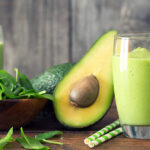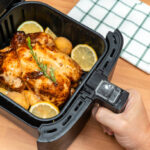Best Blender Buying Guide: If you are looking for a Blender, you have many options. The choices can be confusing, but knowledge itself is power. You can make the best judgment when you have all of the facts in front of you. This is why we have put together this information. Here is what you need to know before buying a blender.
Read More: The Four Kitchen Knives You Need for Home Cooking
Table of Contents
Types of Blenders
There are three (3) main types of blenders: full-size, personal, and immersion. The basic countertop blender is undoubtedly familiar to you. It is the same as your grandmother’s. Let’s begin with this most prevalent and well-known type.
Full-Size Blenders
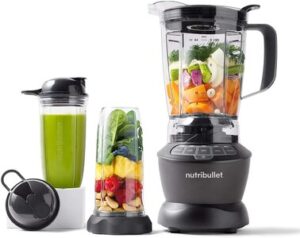
Personal Blenders
The name itself is saying all. Personal, also known as singles serve or bullet blender, is a new concept that was introduced first to consumers by the NutriBullet brand in 2004. The idea is to prepare the single-serving portion of the drink and take it away or consume it in the same container. Smoothie fans who are in a hurry in the morning find the idea of a personal blender very convenient.
They are ideal for making smoothies from hard and soft ingredients (depending on the blender model) items like yogurt, fresh fruit, and vegetables. These devices are suitable for people who prefer a liquid breakfast in the morning. There are usually only one or two speeds on these little blenders. Compared to most countertop blenders, they’re affordable but less powerful and adaptable. If you do a lot of cooking, they are not a good substitute for a full-size countertop blender.
Immersion Blenders
Immersion blenders, also known as stick or hand blenders, are mostly used for light prep recipes. If you would like to find out more about this type of device read our articles here.
Compare the Costs
Often, it all comes down to money. How much money can you afford to spend? Blenders are priced differently depending on their make and model. The good news is that there is a blender to suit every budget as they range in price from as little as $20 to as much as $1,000. The cost is determined by power, durability, and high-quality materials, and they may be divided into roughly three classes.
Affordable
The blender for basic needs will cost you around $50. The decent model, sometimes with additional single-serve or/and food processor accessories, may be located even for under $100. Such machines can perform more than just basic smoothies and mixing prep recipes. Some models would be able to make even nut butter with some effort.
Mid-Range
This category usually falls into the machine that tries to copy the high-end blenders and can accomplish some or most of the tasks the high-end devices can perform. They often have the same engine but are not as good quality as premium blenders. They may cost you around $200.
High-End Options
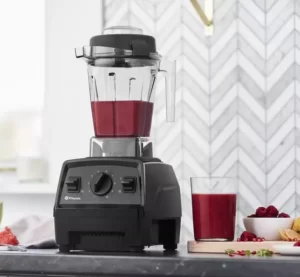
Look at Its Power
Here are some power range guidelines:
Up to 600 watts:
This is the power rating found on the majority of inexpensive countertop blenders. Blending and mixing soft ingredients with liquids should go smoothly. This type of machine will usually cost up to $50.
Up to 1200 watts of power:
This power rating is available on the most affordable (under $100) countertop and advanced personal blenders. The toughest ingredients will be chopped and blended with some effort.
1300 to 1800 watts of power:
You’re now entering the realm of true versatility. A blender with such power can process hot soups from cold ingredients via frictions, make your own peanut butter and grind grain into flour. Because you will have more power, you will not be limited in your exploration. This extra muscle will cost you more money.
Container, Size, and Construction
There are many different blenders available, each with a distinct container. When shopping for a blender, consider the following features:
Material
There are many different blenders available, each with a distinct container. When shopping for a blender, consider the following features:
Plastic:
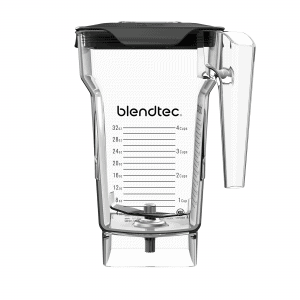
Polycarbonate is the most common material for containers used nowadays because it is relatively lightweight and simple to maintain. However, dishwasher safety is an issue for some of them, and plastic is more susceptible to stains. In addition, polycarbonate material may contain BPA and other harmful substances; thus, some people consider it unsafe, especially when used for hot foods.
The Tritan co-polyester material is an advanced, durable, and virtually unbreakable type of plastic produced in the USA. Since it can withstand heavy usage, higher temperatures, and acidic foods better than polycarbonate, it is used for most premium blender models.
Glass:
Glass used to be the common blender container material before 90th when all sorts of polycarbonate became very popular amongst blender manufacturers. However, today the consumer will not find a large selection of blenders with glass jars. Since they weigh more than plastic, are more difficult to transport, and are more prone to damage and breakage, few manufacturers find them convenient for blender design.
Nevertheless, the glass containers are typically more resistant than plastic when it comes to scents and discoloration and lack of issues with BPA and other harmful chemical leakages to food. The glass jar blender is still very popular with health-aware consumers, but no great selection of such blenders is available nowadays.
Other:
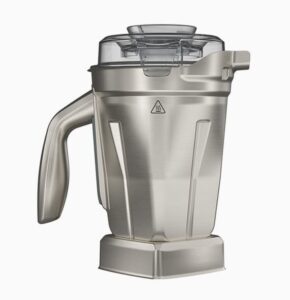
Containers with Inbuilt and Removable Blades
All personal blender and many affordable and mid-range countertop blender comes with removable blade construction. A removable blade container has detachable knives that are attached to a shaft that connects to the blender gear.
While almost all High-end and a few mid-range blender models come with inbuilt blades, this type of blender is much easier to assemble, disassemble, and clean.
Containers Sizes
Blenders range in size from two (2) to fourteen (12) cups, and only you can decide which size is best for you. Remember that the smaller the blender container, the less powerful the blender.
If you only want to blend smoothies and shakes for yourself, a small personal blender will save you space and time cleaning. However, if you’re going to keep your blender options open, you will be better off with the larger capacity gadget.
Upkeep and Maintenance
Several containers, lids, and blades can be washed in the dishwasher, but check your blender’s manual to be sure. However, any blender pitcher can be self-cleaned; simply fill the pitcher with water and dish soap and run it. The process will thoroughly clean the inside of the container.
Make Sure It Fits Your Space
It is important to make sure your blender will fit under your kitchen cabinet when it comes to blender dimensions. Before buying the gadget, check how tall is the machine profile with the container lid on the top. If you plan to keep your blender on your countertop, it should not exceed 18 inches. That is a standard space between the counter and the bottom of the kitchen cabinet.
If you decide to stockpile it in your kitchen cupboard, make sure it has enough space for storing this bulky device.
Final Thoughts
A high-quality, feature-packed blender will cost you, but consider it an investment. It can last a long time if properly cared for, but there’s nothing wrong with getting a simple, inexpensive blender if it meets your needs.
Choosing a blender isn’t tricky, but it should be done with care. If you buy a blender that you don’t like or use, it will gather dust on your counter.

